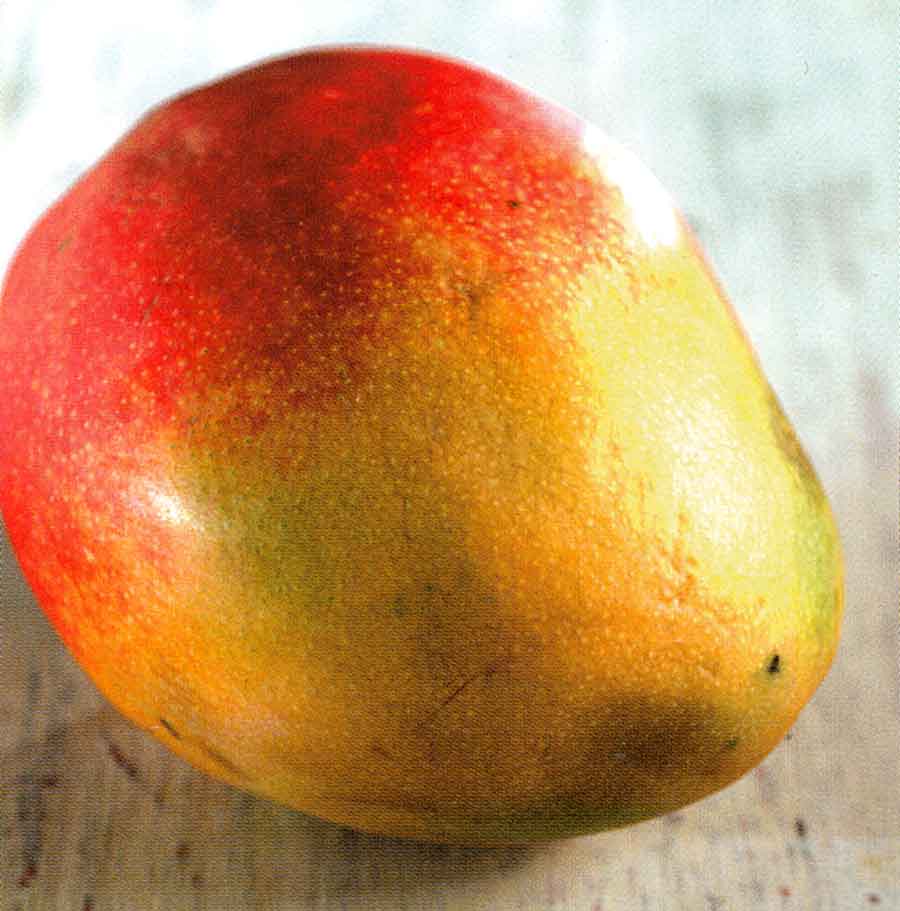Mangoes are among my favorite fruits ever! Mangoes are available from March through September. There are 150 varieties of mangoes all over the world: various shapes, outer colors, sizes, and fragrances, but always delicious. Venezuela, where I grew up, is mango country! In our garden we had 3 different kinds of mango trees. My sisters, friends and I used to spend hours in the trees, climbing, picking, peeling, eating, chatting, dreaming about our futures, peeling again until we finally had to go down to wash our sticky yellow hands and faces! Still now, 15 years after I left my country, mangos are still number 1 for me.
How to Choose Mango
- When picking a mango, don’t focus on color. It is not the best indicator of ripeness.
- When ripe, mangoes should have a green to yellow skin tinged with red, smell fruity, and feel fairly firm when pressed gently.
- Avoid extremely soft or very bruised fruit or fruit with blemishes. Ripen mangoes at room temperature.
- Squeeze the mango gently. A ripe mango will give slightly.
- Use your experience with produce such as peaches and avocados, which also become softer as they ripen.
- Ripe mangos will sometimes have a fruity aroma at their stems.
- The red color that appears on some varieties in not an indicator of ripeness. Always judge by feel.
Benefits of Mangoes
MANGOES; are loaded with fiber (which, among other things, helps you curb your appetite by keeping you feeling fuller for a longer time). Are good for the kidneys, for cleaning the blood, help with digestion, combat acidity in the stomach and constipation, and are very beneficial for the health of the skin.
How to Store Mangoes
Refrigerate them as soon as they are ripe and use them within 4 or 5 days.
Note: If you cannot find ripe mangoes; green ones can be ripened in a paper bag at room temperature, and then refrigerate once they are ripe.
How to Eat Mangoes
Suggestions: Raw; in slices with lime-lemon on a side for breakfast or as a dessert; with Mrs. Pineapple and Senora Papaya (Mango is a Mr. by the way!), they form a super trio which is the best breakfast! Frozen in chunks (in summer time), juiced in the blender) or in a smoothie with strawberries, orange juice, banana and raspberry. Eating suggestion: Slice the mango in two halves and scoop the flesh with a spoon.
In case you find it too sweet, just splash with some lemon-lime.
Menu Combinations
- Mango, pineapple, strawberries and banana.
- Papaya, pineapple & mango all decorated with lime-lemon wedges and red currants- a real feast for the eyes and the tummy! A real beautifier!
- Suggestions: For breakfast, with some lime-lemon wedges, or together with best friends, Mr. Mango and Mrs.
Tips, Suggestions and Notes
Mangoes should have smooth, unblemished, firm skin with a wonderful smell.
Nutrients and Calories
They are low in calories, fat and sodium, and very rich in beta-carotene, vitamin C, potassium and polyphenol (which, combined, may protect against cancer). Ripe mangoes contain as much as vitamin C as citrus fruits; they are also high in flavonoids, (antioxidants essential to a healthy immune system).

